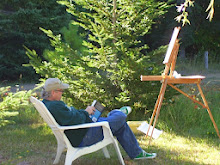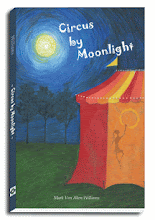The Metropolitan Opera is going to stage Strauss’s “Salome,” featuring one of the HOT BABES of opera, Karita Mattila. The “Dance of the Seven Veils” is the highlight of the production. During the dance, Salome slowly removes each of her sheer veils, ending the dance in the nude. So you have to have a singer that has a nice figure (no big voice in a big body).
To some with a sense of propriety, this might be a little challenging—because first, Salome is supposed to be a teenage girl; and secondly, they are mixing scripture with sex.
Nudity is not new to opera. Years ago, the New York City opera introduced American audiences to nudity in Arnold Schoenberg’s “Moses und Aron.” They were threatened with the withdrawal of funding, if they presented a work that might be considered obscene under the Supreme Court’s definition of obscenity, included in its 1973 ruling in Miller vs. California. A key to this decision was whether a work “appeals to the prurient interest.” They went ahead with the production anyway.
Trust me—Karita Mattila performing a veiled strip tease definitely appeals to my prurient interests. Remember, she is HOT and stripping.
The argument that the world of theater has used forever, concerning nudity in plays, can be summed up by Heather Haney, when asked about being in a nude Shakespeare production—“The nudity in this play is not at all sexual or titillating. It’s about being completely human.”
WHAT in the world does that mean?
Theater has blazed the trail that opera seems to be following. When certain plays have been performed so many times, the director feels the need to put his stamp on it or do something different to fill the seats. The Washington Shakespeare Company’s director of “Macbeth,” said about nudity in their production, that he was inspired to create a radically different visual presentation after reading the same histories of Scotland that Shakespeare could have read before writing “Macbeth.” They described “a really tribal, almost animal like clan and society.” I guess that means—really nude society.
I have no doubt that the use of explicit nude scenes have been used to compensate for shallow writing. But the classics do not have shallow writing. The great playwright will use verbal means and brilliantly crafted words that are precise, to produce the emotions he or she wants in each scene (including sexiness and vulnerability). They convey their presence through the ear and not the eye. Physical nudity interferes with this. The same is true with music.
Dance, on the other hand, is a different story. The instrument of dance is the human body, including all of its beauty and expressivity. Nudity, when not used to eroticize a mediocre piece, is quite valid.
And then there is the “just plain” silly. In Germany, there was a recent production of Verdi’s “A Masked Ball,” where thirty-five nude, pension-age, people come on stage wearing nothing but Mickey Mouse masks. There were also lots of naked young women and a woman in a red swimsuit sporting a Hitler moustache. Get this—“The naked stand for people without means, the victims of capitalism, the underclass, who don’t have anything any more.”
You know, you didn’t have to tell me that. I could have figured that out by myself—OR NOT.
If opera ventures down this same path, it will also have to grapple with the same questions of relevance, gimmickry, and inflated shamelessness that have plagued the theater. When some audience members were asked to comment on the “Macbeth” production, it tuned out that many quickly got used to the nudity, while others merely blocked it out of their minds--which to a certain extent deadened its intended impact.
Subscribe to:
Post Comments (Atom)







No comments:
Post a Comment